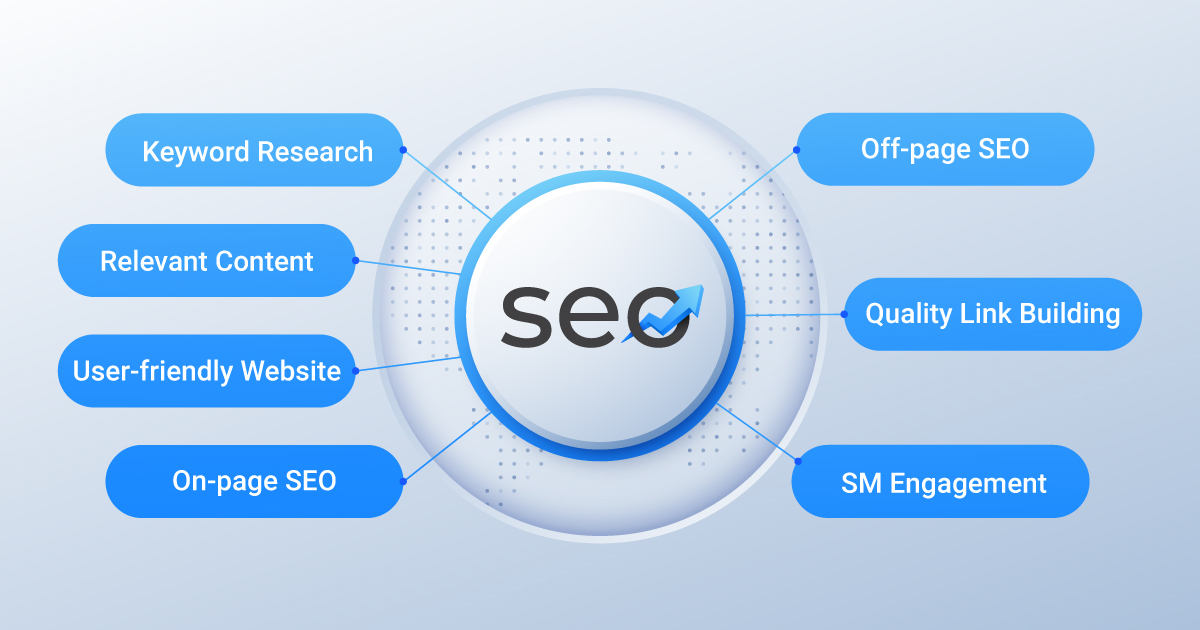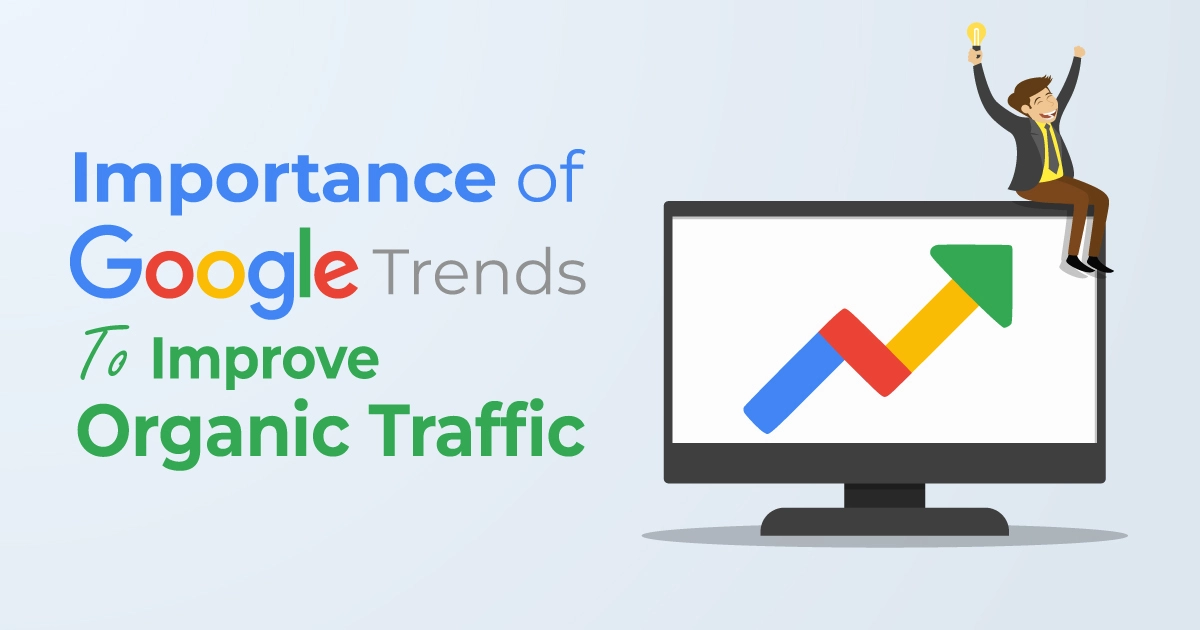Ranking factors heavily depend on successful SEO strategies. Thus, understanding the principles of SEO is a must before working on a project to work organized, build a good foundation, and rank your website in search engines.
So, to help you implement SEO principles in your site, I have created this article. Read it, apply it, and stay above your competitors.
6 SEO Principles to Rank Higher in Search Engines
In this section, I will explain the details of basic SEO principles and what you need to focus on to increase traffic and ranking.
Keyword Research
Researching keywords plays the most important role in ranking factors. If you do not choose the right keyword, your content will not even reach the top 100. So, what is a keyword, and how to research it?
A keyword is a phrase that searchers search with to find a piece of information on a particular service or product. It is usually 2-5 words long. For example, how to take feet pics or how to mask hair in Photoshop. According to your product or service, you need to find relevant keywords that showcase your expertise to visitors and search engines.
There are various tools you can use to research keywords like, Google keyword planners, Ahrefs, Semursh, and others. All these tools show how people google search their queries. If you do not have the budget, you can use Google keyword planners for free. When you search for a keyword, many options will come and you need to choose a keyword that the ranking websites are working with and perfectly relevant to web pages.
Alongside a focus keyword, you need to find synonymous and LSI words to use in creative content writing. All the keyword usage will prove its relevance to search engines and users and place it in a higher position.
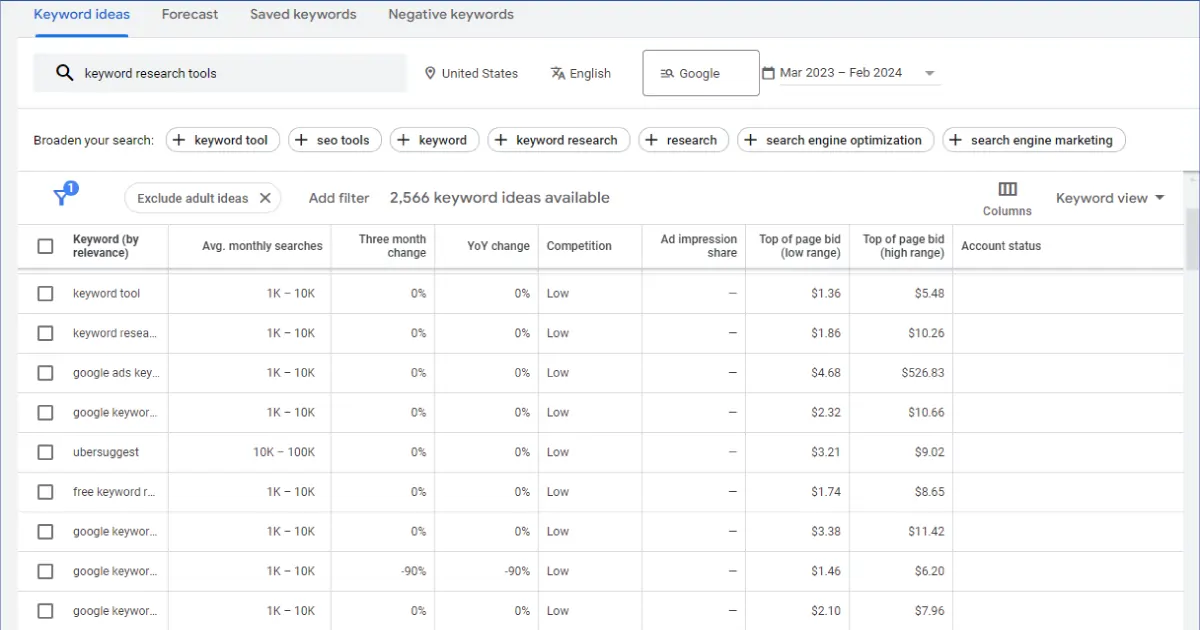
Quality & user-friendly Content
Have you heard of the phrase, Content is King? It is a marketing expression to show the importance of content in search engine rankings and traffic enhancement. However, the content can not be just any content. It has to be professional SEO content written with relevant keywords. While writing, you need to optimize content for two elements.
Optimize for Search Engines
After you write the content with keywords, you need to index it so that search engine crawlers can crawl it and understand the page information and relevancy to your web pages. If you want to rank your blog content writing, every piece of content needs to be fully relevant and authentic to your site. If any topic does not relate to your niche but you just write it in the hope of getting traffic, Google crawlers will immediately recognize it as irrelevant and your overall traffic will be decreased. Thus, ensure every content is appropriate for your niche.
How to show Google that the content is relevant? Use focus keywords in your meta title and meta description, title tag, H2, and other texts naturally 4-5 times depending on the text size. Try to make the headings and sub-headings with LSI and synonymous keywords. When Google sees that it is written with keywords and all sections answer searchers’ queries, it will take it as high-quality content and rank it automatically.
Optimize for Humans
Not only the content needs to be relevant to search engines but also to humans as well. Google may give you a position on the first page however, whether you can keep the position or not, it will depend on your visitor’s engagement. If the visitors click and stay on the web post, search engines will take it as valuable content and improve its ranking. On the other hand, if the visitors leave immediately, your ranking will be taken down.
So, web content writing services need to engaging and fully informational. You need to include all the information in one blog post and ensure the audience gets the value they came for. If they like and continuously visit your website, it will popularize your brand and bring traffic and authority.
Easy Navigating Website
Alongside keyword research and content optimization, you need to ensure your dynamic website is fully functioning. It should be simple with the inclusion of high-quality content, meaningful images, an attractive call-to-action button, a fully working SEO-friendly URL structure, and other links.
Your web pages need to be chronologically organized. You need to answer target audience queries chronologically and guide them to take action. Do not include unnecessary elements which may slow down the site. Your website load times need to be speedy.
After you are done developing the website, ensure the site is fully working and the audience gets the best experience and becomes your customers. Also, the web design and development needs to be eye-soothing and represent your brand. Thus, Choose color palettes and designs that represent your brand vividly.
On-Page SEO
As the name suggests, on-page SEO is done inside your web pages. For example, checking broken links, if the content and images are fully SEO optimized and indexed, researching relevant keywords, checking traffic rates, and fixing other issues on the website. While doing on-page SEO, you need to focus on two things “Title Tags and Internal Linking and External Linking”.
Title Tag
Content brings traffic. The better you can represent your content to search engines and audiences, the easier your content will be found bringing more organic traffic to your site.
Your title tags need to have a focus keyword or Google will not understand it. For example, your focus keyword is jewelry retouching services, thus, your content needs to have this keyword and LSI keywords to make Google understand what type content you have written. Remember, every page should have 1% keyword density which means using the target keyword 10 times in a 1000-word content.
Though I have mentioned it before, I will say it again. You need to use the focus keyword in the meta title, meta description, H1, H2, and throughout the content. However, ensure the keywords are not used forcibly reducing the content quality. Use Keywords as naturally as possible so that both search engines and audiences can enjoy reading.
Internal Linking & External Linking
Internal linking connects one page/post to another page/post of your website and external linking is when you link to other authoritative websites to increase your validity and authority in search engines. Both have their benefits for creating a valuable site.
Internal Linking: Internal links guide audience and search engines to find the content and navigate through your web pages. How? When you link relevant posts, it keeps the audience engaged and creates value for your content. It also helps in ranking factors because when the audience spends time on your blog posts, Google takes them as valuable content.
The same goes for search engines. When a Google bot crawls your website and sees pages and blog posts linked together, it visits all pages through the links taking your site as valuable for people, and ranks it. Thus, when you link pages ensure all the internal linking is relevant to the content.
External Linking: External links connect your web pages and blogs to other websites and build trust and authority. By using external linking, you can show your site authenticity and show search engines your sources and what you are delivering to your audience. Thus, do not hesitate to do external linking. Find real, trustworthy, and authoritative sites and try to link them there. The more you can link to good sites, the better Google will rank your content.
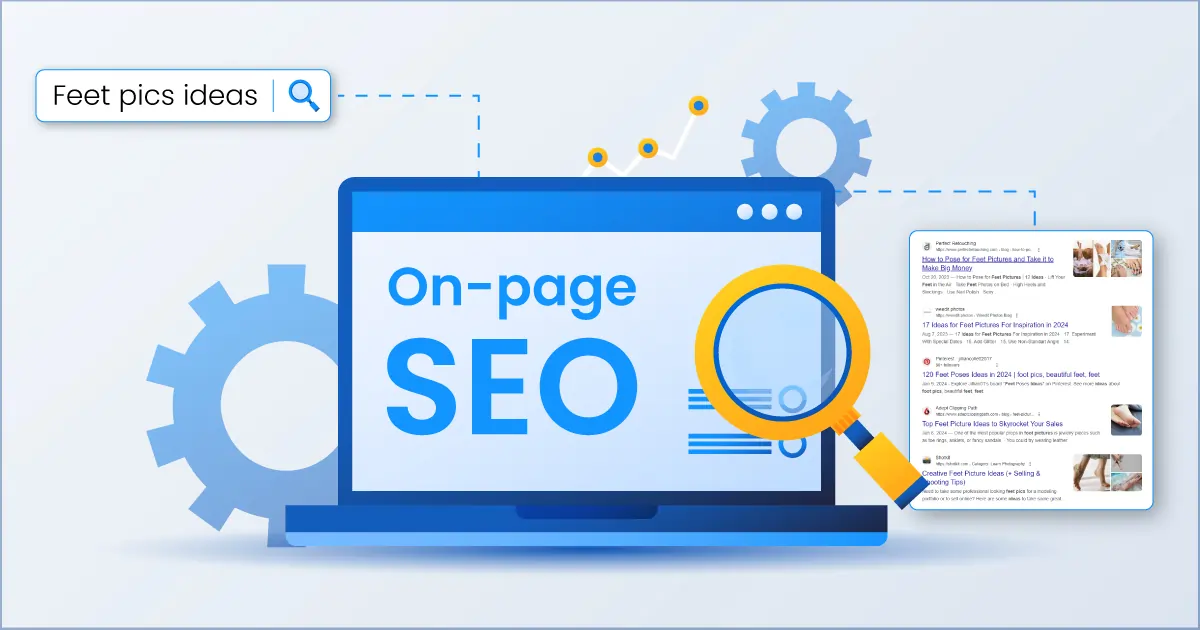
Off-Page SEO & Quality Link Building
Off-page SEO is called backlinks. Backlinks are links when other websites link to your website. However, Google’s algorithm said not to backlink anymore. I highly recommend not paying attention to the rule and doing as many high-quality backlinks as you can because backlinks show your brand authenticity and build authority around the community. As a result, search engines rank high-quality content hassle-free.
You can do backlinks in many ways like publishing guest post blogs and using proper anchor texts to link. You can also do paid backlinks but you can find many experts in the market who do manual backlinks with tools. I think Manual links are more profitable than paid ones in improving ranking factors.
Social Media Engagement
How do social media services play a role in SEO principles? Wait a second, I will elaborate on it now. Did you know you can get traffic from social media like Facebook, LinkedIn, YouTube, Pinterest, Instagram, and other platforms? When somebody reposts or shares your content, search engines take it as valuable content and rank it.
Thus, make social media accounts with your brand-related name and post engaging and high-quality content regularly. Especially, stop-motion videos and short videos. People like to watch 60-second videos rather than see pictures nowadays. So, if you want to approach many people fast, make high-quality engaging videos related to your niche so that they share your videos and your website traffic increases rapidly. Use social media strategically for your brand’s benefit because even if people do not find your website immediately, they can find you through social media.
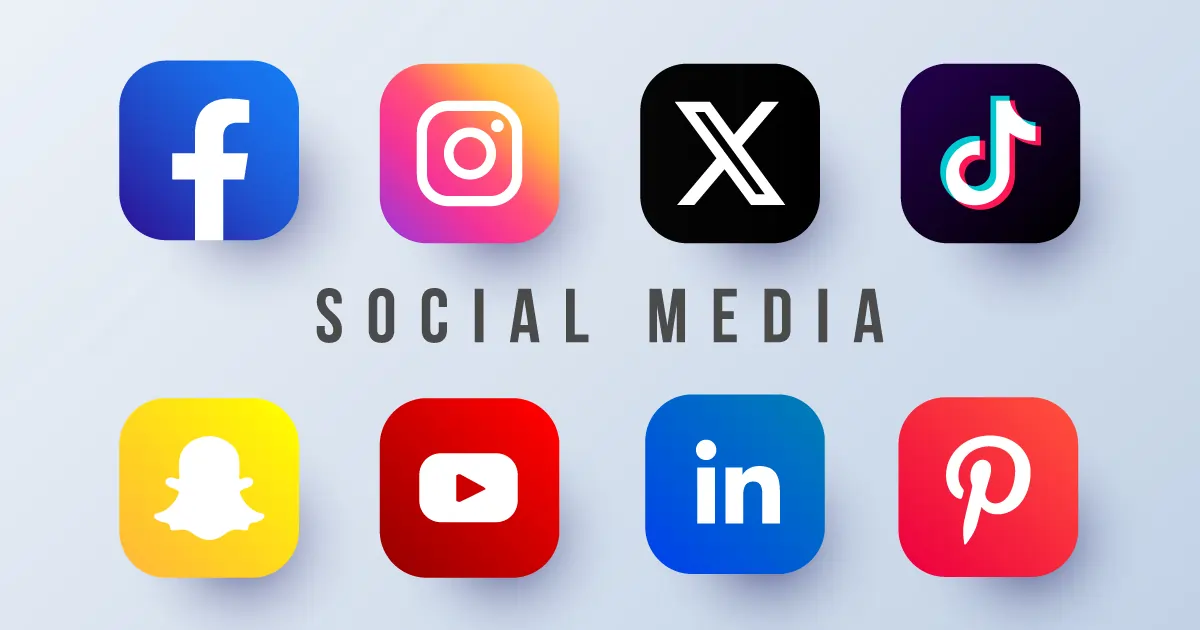
What to keep in mind while doing SEO
I have told you about the core SEO principles you must follow to increase traffic. However, there are some more things you need to be cautious about while doing SEO on a website. Let’s see those.
Keyword Stuffing: The keyword stuffing era is gone. Search engines are prioritizing quality content now. So, every sentence has to be relevant, user-friendly, and answer searchers’ queries. You will use as many keywords as you can but naturally. It should look like a part of the sentence.
AI Use: Using AI to write content is prohibited. Google noticed the increased use of AI in content and brought down many websites from 2022 updates to the March 2024 Google Core Update. Now, Google is focusing on content authenticity thus, if you want to survive the updates and keep ranking factors safe and high, you need to ensure topical relevancy and originality.
Low-quality writing & Structure: While writing for any niche, you need to ensure the quality. How? Follow a sustainable content creation workflow and provide the correct and full information in one place so that the audience does not have to go anywhere else.
Simple user-friendly website: Think about your brand identity and design your web pages with a color combination that suits your brand. The web design should be simple, and guide the audience to know more about what you have to offer and click the CTA button to contact you.
Low-quality Link building: Avoid doing low-quality links or it may affect your website traffic. For example, open directories. You can link there for free but everyone links there so, it does not have much value. Also, commenting on forums and blogs is easy but does not create much value. So, do one link-building a day but a high-quality one.
Link Sharing in Social Media: Do not share too many web pages and blog post links on social media. It may disturb the audience and hamper traffic growth.
Summing Up
Search engine optimization (SEO) is a complicated topic. You will be surprised to know that many people still do not understand the magic an SEO can do for your brand. If 1000 people know your brand with offline and social media marketing, digital marketing will popularize your brand throughout the world.
Thus, apply the mentioned SEO principles in your digital marketing strategy and get customers worldwide. Also, following the principles of SEO will save you from the Google Core Updates and increase your traffic continuously. Lastly, If you need professional SEO services to improve your website performance and traffic, contact us. We have successfully ranked many websites and ensured Google Core Updates do not affect their position in the ranking. Get a Free Consultation now!
Keyword research, high-quality content, and a fully functioning website are the key principles of SEO. However, you also need to focus on 3 more basic yet important SEO principles On-page SEO, Off-page SEO, and social media. Following these 6 principles will ensure your ranking in search engines.
Long-tail keywords and short-tail keywords. Long tail keywords have 3-5 words and they are easy to rank and easy to portray search intent like how to invert selection in Photoshop. And short-tail keywords consist of 2 words but since many websites have written content with short-tail keywords already, you need to write it broadly to rank it.
By competitor analysis. Search the topic on Google and analyze the top ten ranked content. Cover all the points and add new relevant things that others did not cover. Write creatively and hurray! Your high-quality content is ready.
